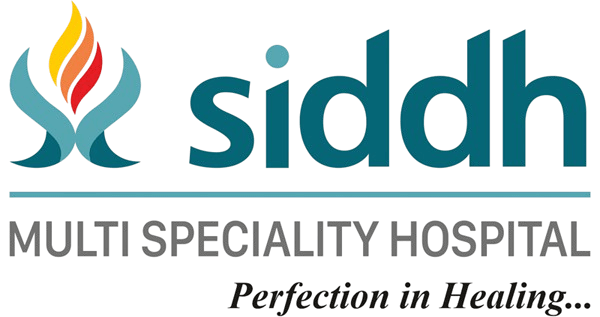Umbilical Cord Serum Lipid Profile of Normal Preterm Neonates and Preterm Neonates with Respiratory Distress Syndrome: A Hospital-Based Cross-sectional Study

Case Description
Introduction: Respiratory Distress Syndrome (RDS) is a common cause of morbidity and mortality in preterm neonates. Levels of minor phospholipids and lecithin in amniotic fluid are significantly influenced by lipid metabolism.
Aim: To evaluate umbilical cord lipid profile of preterm infants with RDS and normal preterm group without RDS.
Materials and Methods: This was a hospital based cross-sectional study carried out in neonatal unit of at a Tertiary Care Centre at SMS Medical College, Jaipur, from June 2017 to May 2018. Out of total 80 preterm infants, 40 developed RDS and 40 infants served as controls. Umbilical cord blood lipid profile of neonates were done in both the groups and compared. Chi-Square test and unpaired Student’s t-test were used for statistical analysis. Probability was considered significant if less than 0.05
Results: Mean weight of babies was 1494.75±201.66 grams in normal preterm group and 1450.25±233.23 grams in preterm with RDS group (p=0.364). Mean gestational age was 31.45±1.36 weeks in normal preterm group and 30.98±1.49 weeks in preterm with RDS group (p=0.140). Low Density Lipoprotein (LDL) and High Density Lipoprotein (HDL) were higher in male babies in both the groups as compared to female babies (p>0.05). Mean cord blood Triglyceride (TG), Total Cholesterol (TC), Very Low Density Lipoprotein (VLDL), LDL and HDL levels were significantly lower in preterms with RDS as compared to normal preterms without RDS (p<0.05). Mean cord blood TG, TC, VLDL and HDL levels in all gestational age were higher in normal preterm as compared to preterm with RDS (p<0.05), except for LDL on 34-36 weeks age.
Conclusions: Lower serum cord lipids of newborns may develop RDS. The cord blood, which is easily available, can be used for lipid levels at birth to predict RDS.
Introduction
Preterm birth is one of the leading causes of infant morbidity and mortality worldwide. The rate of preterm births has been increasing over the last several decades. In extremely preterm newborns with respiratory distress, RDS is by far the most common diagnosis. RDS is one of the most common causes of morbidity and mortality associated with premature delivery. RDS is a developmental disorder rather than a disease process per se. Surfactant deficiency which increases surface tension in alveoli, resulting in micro atelectasis and low lung volumes is the primary cause of RDS.
Pulmonary surfactant is a complex mixture of 90% lipids and 10% proteins. Levels of lecithin and phospholipids in amniotic fluid, use of cholesterol for hormone synthesis, fetal growth and development during late gestation are significantly affected by lipid metabolism. Lung cholesterol metabolism is regulated by both LDL and HDL. Several factors significantly affect neonatal serum lipids, especially gestational age and birth weight. Maternal lipoproteins provide the free fatty acid substrate required for fetal surfactant synthesis in vivo. Reduced transport of essential and long chain polyunsaturated fatty acids could inhibit normal fetal growth and maturation including delayed development of fetal lungs, which could lead to the RDS.
The purpose of the study was to compare umbilical cord lipid profile of preterm infants with RDS and normal preterm infants without RDS.
Materials and Methods
This hospital-based cross-sectional study was carried out at Neonatal Units of Department of Paediatrics, SMS Medical College Jaipur from June 2017 to May 2018, after getting ethical clearance from research review board of the institute (IRB No. 57673/2017).
Sample size: A total of 80 newborns were included in study, 40 newborns were normal at birth and 40 newborns developed RDS. Sample size calculation was based on expected HDL values of 34.2 mg/dL with SD±6.60.
Inclusion criteria: Neonates with gestational age ≥ 28 weeks to ≤ 36 weeks and birth weight ranging from 980 grams to 2260 grams. For preterm with RDS (group B) clinical signs suggestive of RDS used in the study were cyanosis, retractions, acidosis or hypoxemia or hypercarbia on blood gas, diffuse alveolar atelectasis on X-ray. For healthy preterm neonates (group A) with the same gestational age were enrolled as controls.
Exclusion criteria: History of maternal hypertension, parental or maternal hyperlipidemia, maternal cardiovascular disease, diabetes, drug use during pregnancy (except vitamins/iron/folic acid), smoking, congenital malformations, hypoxic ischemic encephalopathy, sepsis, small for gestation age.
Detailed antenatal and natal history was taken. Newborn examination included birth weight, gestational age by Modified Ballard score, Apgar score, and clinical exam. Cord blood samples of 3 mL were obtained from umbilical vein immediately after delivery. Serum lipid profile was estimated using enzymatic colorimetric method. LDL was estimated using Friedewald’s Formula.
Statistical analysis: Data were analyzed using SPSS v21. Chi-square test and Student’s t-test were used. Probability was significant if p<0.05.
Results
The study included 80 preterm infants, 40 with RDS and 40 controls. Mean weight was 1494.75±201.66 g in normal preterm group and 1450.25±233.23 g in RDS group (p=0.364). Mean gestational age was 31.45±1.36 weeks in controls and 30.98±1.49 weeks in RDS group (p=0.140).
Apgar scores at 5 min were significantly higher in RDS group compared to controls (p<0.001). No significant differences were observed for Apgar score at 1 min, birth weight, gestational age, mode of delivery, parity, or PROM ≥ 24h (p>0.05).
Mean cord blood TG, TC, VLDL, LDL and HDL levels were significantly lower in preterms with RDS compared to normal preterms without RDS (p<0.05). Differences persisted across gestational subgroups except for LDL at 34-36 weeks, which was non-significant.
In RDS babies, there was a poor positive correlation between gestational age and cord blood TG (r=0.077, p=0.635), TC (r=0.145, p=0.369), VLDL (r=0.0792, p=0.627), LDL (r=0.1702, p=0.293) and HDL (r=0.0546, p=0.737).
Conclusion
Lower serum cord lipid levels in newborns are associated with RDS. Since cord blood is easily available, lipid levels at birth can be used as a predictor of RDS in preterm infants.
Funding: No funding sources
Conflict of interest: None declared
Ethical approval: IRB No. 57673/2017
